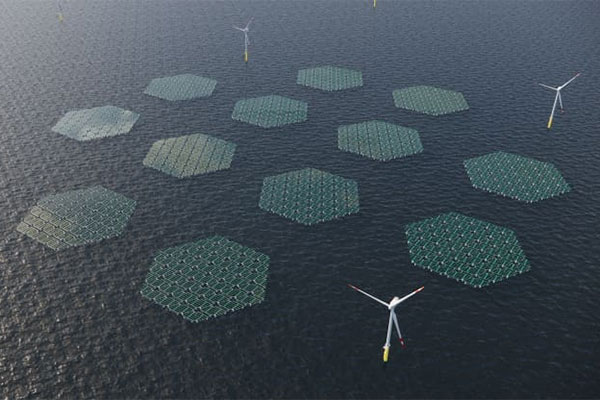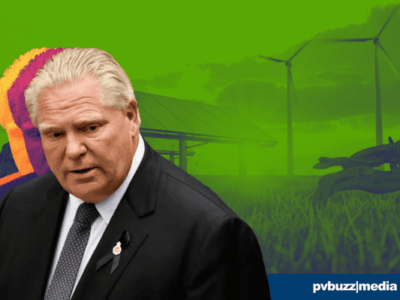- German energy firm RWE to invest in a pilot project in the North Sea featuring technology developed by Dutch-Norwegian start-up SolarDuck.
- The pilot project, called Merganser will have a 0.5 MWp capacity and will utilize SolarDucks’s triangular-shaped floating platform of solar panels, which are capable of withstanding harsh off-shore conditions.
- Hybridization projects, combining multiple renewable energy technologies, are attractive to investors due to their potential for generating greater sustainable energy at lower costs.
As part of a larger collaboration focused on advancing “floating solar parks,” German energy firm RWE will invest in a pilot project featuring floating solar technology in the North Sea. The hope is that floating solar technology will be more widely used by 2023.
The solar panels being developed by the engineering team at Dutch-Norwegian start-up SolarDuck are capable of floating over currents like lily pads in a lake. The pilot project called Merganser is set to be installed in waters off Ostend, Belgium. Merganser will have a 0.5 MWp capacity.
Each triangular-shaped platform of solar panels will float meters above the water and be capable of riding the waves.
SolarDuck’s design keeps the electrical components of the panels dry and clean while the semi-submersible structure remains stable and steady in seawater. Their design received the world’s first certification for offshore floating solar, awarded by the French certification body Bureau Veritas.
It’s an important endeavour, with learnings from the pilot potential to speed up the technology’s commercialization and provide insights into navigating a challenging offshore environment. Although floating solar has been successfully implemented inland on reservoirs and near-shore locations, off-shore projects must be able to contend with harsher conditions such as high winds, strong waves and corrosion caused by salt water.
Future projects utilizing SolarDucks’s technology are already in the works; RWE is in the process of tendering a larger project at the yet-to-be-developed Hollandse Kust West offshore wind farm. Incorporating floating solar into offshore wind farms will promote more efficient use of ocean space while increasing the capacity for renewable energy generation.
With over 139 million square miles of ocean space on Earth, the opportunities for future projects are vast, and many energy firms have taken notice. This isn’t the first time a renewable energy firm has investigated combining offshore wind and solar projects.
Eneco and Shell formed CrossWind, a joint venture to help develop the Hollandse Kust (Noord) wind farm in the North Sea. They are considering adding a floating solar demonstration to Hollandse Kust (Noord), located in waters approximately 18.5 kilometres off the coast of the Netherlands.
The CrossWind joint venture is aiming to be up and running by 2023.
A recently completed 5MW floating solar park in Alqueva was developed by EDP, a Portuguese energy firm. Their facility contains nearly 12,000 photovoltaic panels and is considered the largest European project in a reservoir. Currently, a battery storage system is being considered for the installation, which integrates solar power with hydroelectricity produced by the dam in Alqueva.
The process of hybridization integrates multiple renewable energy technologies on one site. All the above projects are examples of hybridization and show the potential for future advancements in the field. When electricity is combined from multiple renewable sources, it optimizes resources and allows energy firms to generate more power at a lower cost.
This makes hybridization models appealing to investors. It represents a logical path for renewable energy growth, one where energy demands are met with secure, sustainable, and affordable solutions.













Comments